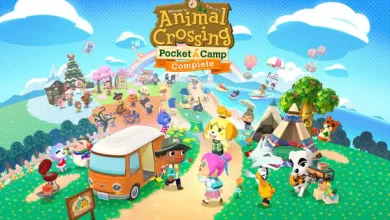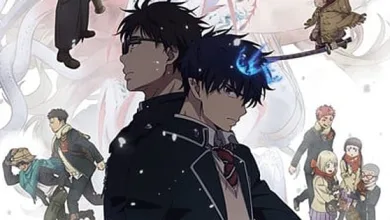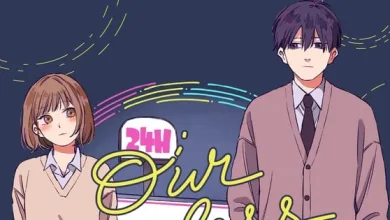Dungeon People Anime Series Review – Review

Dungeon People is a cute, cozy mash-up of the fantasy and workplace comedy genres that mostly succeeds at what it sets out to do. While not as relentlessly creative or compelling as this year’s earlier Delicious in Dungeon, Dungeon People maintains a pleasant, gently entertaining vibe of its own, with plenty of fun ideas to explore.
At its core, Dungeon People is the exploration of the developing friendship between two lonely girls – stoic, (mostly) expressionless thief Clay and the effusive, though socially inexperienced, administrator Beilleheila (Belle). Much of the humor arises from Belle and Clay’s interactions, a variation on the time-honored Japanese manzai form of comedy,
where one character says something bizarre or outlandish while the “straight man” reacts. While I often find stereotypical manzai tiresome, Dungeon People avoids the over-emoting and noisy reactions so endemic to the art form because Clay herself… barely reacts. Whether this inversion of the standard routine appeals to you or not is probably very individual, but I found Clay’s perpetual stony-faced bemusement kind of adorable. Clay’s usual reaction to Belle off-handedly talking about bizarre subjects – like plant-esque goblins eating their own infants – is usually limited to a dark expression or a single sweat-drop. It’s like she’s fallen into an endless slow-motion nightmare and has no idea how to wake up from it. Belle’s delighted bounciness and eagerness to share everything about her strange, secret world is infectious, and Clay’s quiet resignation is the perfect counterpoint.
Clay’s stoicism doesn’t mean she’s a main character without agency, however – she’s a problem-solver at heart, motivated to succeed, and with an inquisitive mind. While Belle is most certainly unnaturally superhuman (we never really learn her origins nor why she’s blessed with such overwhelming magical power), Clay demonstrates her own not-exactly-normal-either skills, bounding up and down walls and effortlessly sneaking past unwary adventurers. She seeks out new solutions to organizational problems – I particularly love the early sequence where she leaps down into a massive chasm to transport boxes of supplies to a lower floor, dashing along the walls like the Prince of Persia, inspiring the tiny rock golems watching her to blush in admiration.
Those tiny rock golems are possibly the most adorable aspects of the show, with their expressionless little stone faces, cute arm gestures, and squeaky vocalizations. While the character and monster designs are extremely simple, they’re also very effective, giving the show a unique and attractive look. Belle and Clay both have childlike faces with enormous
eyes that give the (inaccurate) impression of a children’s anime, which does belie the darker thematic aspects explored in later episodes.
Occasionally, Dungeon People swerves into scenes of unexpectedly visceral violence or even existential horror. The fate of three criminal adventurers, who lure women into the dungeon to abuse and kill them, is particularly dark (though deserved). Although structured like a documentary relating the inner workings of a theme park, Dungeon People never
shies away from the fact that adventurers enter the dungeon to kill and die. Belle can often be disconcertingly inhuman, with her values, speech, and actions unsettling her new friend.
Clay’s co-workers are an eclectic bunch, from a fairly grumpy dwarf to a friendly minotaur and an excitable demonic cat. We meet them outside of their normal roles as battle fodder – in rec rooms or kitchens, socializing or making food. Every aspect of the dungeon, and the support structures outside of it, are meticulously managed by Belle. One of the most
entertaining aspects of Dungeon People is learning how typical dungeon functions work in this world – from dying, resurrecting, and re-spawning via magic crystals to corridor lighting, magical fog to prevent adventurers from seeing too far ahead, and the refilling of treasure chests. It almost feels like running a dungeon could be a real, viable business. If
you ever wanted a sociological exploration of how workforce overspecialization could impact the efficient running of, and interpersonal relationships in a relatively technologically advanced fantasy dungeon setting, then this is the show for you!
Dungeon People isn’t one of animation studio OLM‘s more flashy productions, though it mostly looks pretty decent – the simple aesthetic helps maintain a consistent visual identity, even if the backgrounds can be somewhat on the bland side. Action sequences are mostly animated using shortcuts, still images, and panning frames, but on occasion, the animators surprise with a fluid, intense battle sequence. Mostly, the animation does what it needs to, and the simplicity of the character designs likely helped keep the budget expenditure modest.
TrySail‘s opener Micro Revolution is appropriately jaunty and upbeat without necessarily becoming a must-listen, while Akari Nanawo‘s ending song Blueprint perfectly evokes the show’s light-hearted tone, accompanied by even cuter visuals than usual. My one major complaint is in regard to whoever chose the muddy brown-colored subtitle font for the explanatory text translations on the mid-episode title cards. It’s unreadable!
I really enjoyed my time with Dungeon People, watching it week-to-week with my D&D-obsessed son, who adored it. It’s definitely not for everyone – gently humorous, while rarely evoking genuine belly laughs and overly cutesy but with occasional forays into dark, intense violence. Overall, though, it’s mostly a relaxing and enjoyable show with two
adorable main characters and support from a sweet menagerie of strange creatures. With Clay’s father’s ultimate fate still undiscovered and Belle’s true origin unexplored, there would be plenty of material to cover in a second season. I hope we get one.
Source link
#Dungeon #People #Anime #Series #Review #Review



